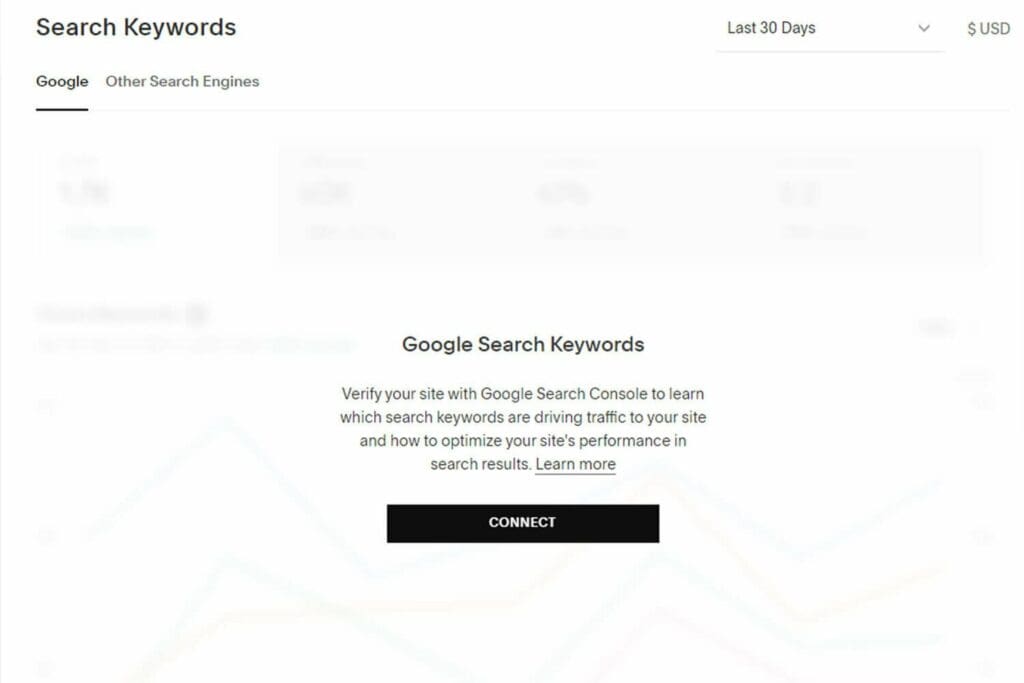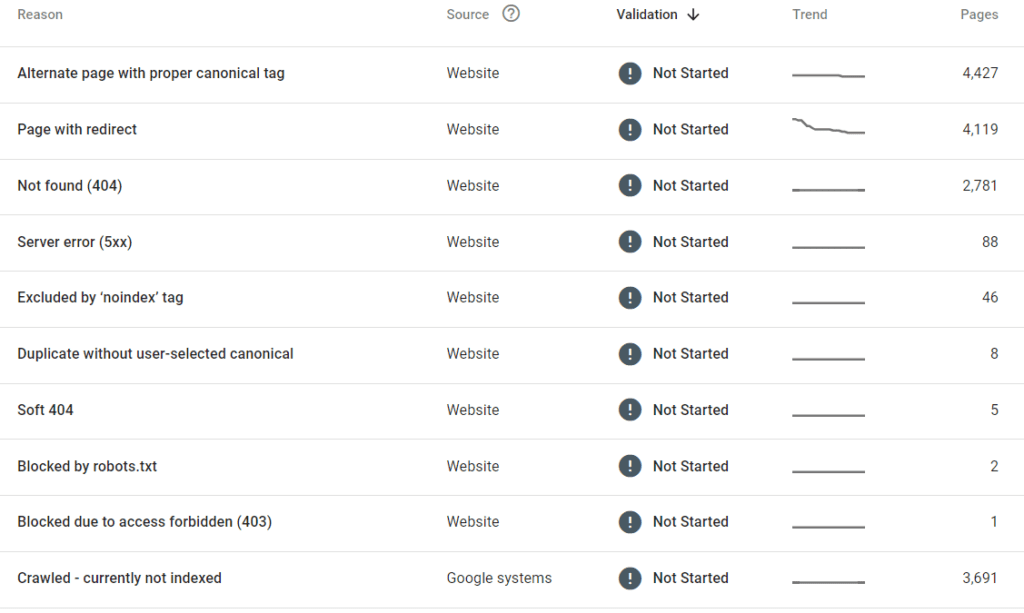Squarespace is a popular CMS (Content Management System) platform that many business owners use to build websites. Similar to WordPress, Squarespace comes with different options to optimize your website. It occurs frequently that your Squarespace website won’t show up on Google. But not to worry, there are plenty of tricks on how to make your Squarespace website show up on Google in less than a week.
Why isn’t my Squarespace website showing up on Google?
If your website is new the answer is clear – it takes time for search engines like Google to find and crawl your website. You can speed up the process by manually submitting your website in the Google Search Console or by acquiring backlinks to your site.
In case, your website has been around for some time but still not appearing on Google it indicates your website has indexability or crawlability issues, which we will explore further in this article.
Before we move to advanced techniques, check these simple reasons that may prevent your Squarespace website to show up on Google:
- Site-wide and page passwords – if you enable any of these options Google will not be able to access and crawl your website. So make sure you disable a site-wide password and a page-password.
- Allow some time – wait at least 72 hours after publishing your website. You can connect your domain with GSC (Google Search Console) after 72 hours have passed.
- Trial sites – if you have a trial site you cannot expect it to appear on Google. Trial sites are hidden from all search engines by default.
Using Google Search Console to publish the Squarespace website on Google
Google Search Console is the primary tool for search engine visibility and optimization purposes. It is a direct product from Google that lets you:
- See the current SEO-related issues with your website
- Check which pages are indexed
- Access the real-time data on keywords, organic searches, and positions
- Manually submit your website links for indexation
Squarespace allows simple integration to GSC from the site dashboard. When you’re logged in with your admin account on Squarespace, navigate to settings and find “Connected Accounts“. You then click on “Connect Account” and choose “Search Console” and follow the instructions.


Once your integration finishes successfully, you will have to wait for around 72 hours for the data to start flowing through the GSC. After all is set and done, you can manually submit your web pages to Google for indexation.


After 72 hours, GSC will start providing data and insights regarding your website. If any issues prevent your pages from showing up in Google and other search engines this is the platform where you find out why.
Open the search console platform and look for the left-hand menu. Under the “Indexing” section find the “Pages” and click on it.
Crawlability and Indexation Issues in GSC
This page lets you know how many of your images are not indexed and why. Some of your pages may appear as crawled but currently not indexed for several reasons. There are several common issues why Google prevents your Squarespace website pages from showing up in search results:


- Alternate Page with Proper Canonical Tag – this means that Google found duplicate content on some other page of your website. If there are two similar contents on your website, Google will only index one of them. So make sure you do not have duplicate content, or in case you do, you assign a proper canonical tag to the main page.
- Page with Redirect – this issue lets you know that when a user clicks on a specific URL they are redirected to a differnet address. Google will not index the pages that direct users to other URLs. Check the pages that have redirect issues and make sure that those are intended redirects.
- Not found (error 404) – these pages are broken and hence won’t appear in any search results. Check the pages that have error 404 and either fix them to appear normally or remove any incoming links to such pages. Furthermore, error 404s disrupt the user experience and your SEO score.
- Server error (5xx) – if you see this type of issue contact your hosting provider. The CMS platform may have bugs or you may need to upgrade your server.
- Excluded by ‘noindex tag’ – noindex tags let search engines know that the website owner does not want the page to appear visible. Check the pages to see if noindex tags correctly suit the page types. For instance, you may want “noindex” tag for your admin login page, but not for the contact info page.
- Blocked by robots.txt – robots.txt is a file where you put all your website links that search engines should not index. Update your file accordingly.
How to Make Your Squarespace Website Show up on Google with Backlinks
Backlinks are incoming links to your site from other websites. So, whenever an external website mentions your webpage and links to it, it is considered a backlink. In essence, backlinks prompt Google crawler bots to find your website faster.
To get your site visible on Google, the first search engine bot should locate your website and crawl it. New websites do not get that much exposure. That is why backlinks are useful. Whenever other websites that have a long history of presence on the internet link to you, Google follows their links and comes across your page.
Another way, backlinks help your indexation processes is by increasing your website reputation. An external website linking to you indicates to Google that someone found your content valuable and worth citing. These citations boost your credibility for search engine bots.
But how do you get other sites to link to you?
Link building for indexing a new website
The very first step you start link building (a process of acquiring backlinks) is by searching for free guest posting websites and directories. However, there are several factors that you need to consider before you start searching for it:
- Nofollow & dofollow links
- Topical authority
- Backlink authority score
- Backlink spam score


NoFollow and DoFollow Backlinks
The backlink is useful only when it tells Google that your website is reliable. There are two types of backlinks: nofollow and dofollow backlinks. A nofollow backlink is a type of link that dictates to Google that the link creator is not sure about the reliability of the linked source. While the dofollow link passes the link juice (credibility). To check whether or not the backlink will be dofollow/nofollow check your competitors who have incoming links from these websites. You can use tools like Ahrefs backlink checker for that purpose, or Semrush free trial.
Topical Authority
The incoming links from other sites are often valuable no matter what. However, they bring in more value when they come from the same niche as your website. For search engines, discovery and relevance is a key. For example, if you are a shoe-selling website, the most valuable backlink you can get is from a fashion blog. You do not need any tools to check topical authority as the topic of the website is visible by simple observation.
Backlink Authority Score
Every website has an authority score (an abstract number indicating the reputability and credibility of the website). If a website linking to you has a lower authority score than you do, it does very little to increase your authority. Hence, SEO specialists look for backlinks that have higher domain or page authority than their client’s site. You can use Ahrefs domain authority checker to filter out high-authority websites.
Backlink Spam Score
Backlinks can be harmful to your Squarspace website if Google regards them as spammy or unnatural links. Google, like many other search engines, wants natural and authentic search results. Hence, it will look for websites that are naturally attractive for other domains and provide truly useful information (cite-worthy). That is why you need to check the spam score of backlinks you acquire in Semrush free trial or other free tools. In case you identify spammy links and you want to remove them (not to link to you anymore), you can use the Google disavow tool.
How to get Backlinks for Free
It is often the most challenging part to get free backlinks for your new website. The two most popular methods are guest posts and directories.
Guest Posts:
Conduct a competitor analysis through Ahrefs, Moz, or Semrush free trial. Identify the blogs that link to your competitor sites. Alternatively, you can try searching in Google for keywords like “free guest posts”, “submit your guest post”, and “guest posting guidelines”. This must yield the websites that accept and publish guest posts free of charge.
Make sure that these guest blogging websites talk about your niche or related topics. For better Squarespace website indexability and Google appearance, check their authority scores, as well.
Directories:
Directories are websites that provide information and data about various sites and businesses online. They mostly include contact information, operation hours and services of a business, and link to their websites. You can search for directories in Google with these keywords “free directories”, “directory posting free”, and “free listings”.





















Leave a Reply
View Comments